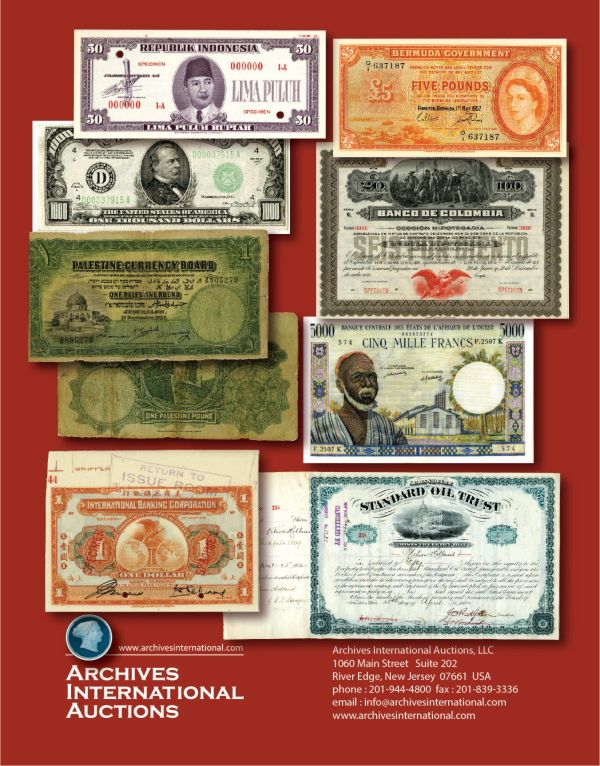
PREV ARTICLE
NEXT ARTICLE
FULL ISSUE
PREV FULL ISSUE
VOCABULARY TERM: FIREGILDING, FIREGILTHere's another entry from Dick Johnson's Encyclopedia of Coin and Medal Terminology. -Editor Firegilding, Firegilt. An early form of goldplating where a mixture of gold and mercury is applied to the surface to be plated, then the object is heated to drive off the mercury. Firesilvering can be done in a similar manner as well. However, the mercury fumes given off during the heating process were so injurious to the workers the process was abandoned – even prohibited in many countries, including France where it was widely practiced. The process, developed in antiquity, was completely replaced by electroplating in the middle of the 19th century. Medals, as well as many metal objects, were gilded by such a method beginning in the Renaissance and continuing for over 400 years. Also a form of firegilding was practiced in the orient, and some 400 year-old Japanese firegilding still exists today with the original gold intact. Firegilding procedure. Gold and mercury are mixed together to form an amalgam – a soft waxy state where the crystals can be crushed between the fingers with a cracking sound. The amalgam is made in advance in small balls, and kept under water for short periods. The amalgam is spread on a stone – gilding stone – with the fingers. A fine brass wire brush is dipped into a solution of nitrate of bioxide of mercury until it turns white; it is then brushed over the amalgam on the stone, a portion of the gold and mercury mixture adheres to each brass bristle of the brush. The object to be gilded, well cleaned and degreased, is then scratch brushed in every direction. The brush is repeatedly dipped in the mercury solution, brushed over the gilding stone and continued to be employed to spread the amalgam evenly over the object. Great skill was required to apply the coating evenly and on all the surfaces desired to be gilded. For objects intended to be parcel-gilt – to be gold coated only on a portion of the total piece – the area to be left uncoated was Stoped off. A mask or jig was used to cover this area while the exposed area was scratch brushed with the mercury-gold amalgam. But in most instances it was left to the skill of the craftsman to treat only the area desired. When uniformly covered with the mercury-gold amalgam the object was then laid on a cast iron plate and heated. In later years a screen separated the operator from the fumes which were drawn off to escape up the chimney. It was these fumes – it was learned – that gave mercury poisoning to workers who practiced firegilding over a period of years. Unfortunately, many lives were shortened from the hazards of this process. Electroplating replaced firegilding. The ease of electroplating an object with the use of gold or silver anodes and primitive batteries replaced firegilding. After having been developed in Germany in 1837, improved in England in 1838, electroplating was brought to America first by the silverware industry in 1839 (and widely increased after 1883 with commercial electricity) – effectively ending the need of firegilding. This also ended the mercury poisoning of workers by this process as well. Firegilding in America. A small amount of items were firegilded in America. Scovill used this method perhaps as early as 1820. Other metalworking firms had brief use for the process. Scovill converted from firegilding entirely to electroplating in 1844 and was able to do gold, silver, copper and zinc plating with primitive batteries from this time onwards and used commercial electricity when this became available in late 1880s. Cataloging firegilt specimens. Recognizing firegilding on numismatic pieces is not that difficult, and it should be mentioned in the description of the piece. If a nongold piece has some gold covering and is dated prior to 1840 it is probably firegilt (although it could have been goldplated at any time afterwards). Firegilding looks old with some uneven darkened areas; often the edges of a parcel-gilt area are feathered. The gilding is usually very thin and some high points may have the firegilt worn off. While the gold color may be uniform, it is usually uneven with weak areas. Reference:
P1 {1878} Spon, p 202-203.
To read the complete entry on the Newman Numismatic Portal, see:
Wayne Homren, Editor The Numismatic Bibliomania Society is a non-profit organization promoting numismatic literature. See our web site at coinbooks.org. To submit items for publication in The E-Sylum, write to the Editor at this address: whomren@gmail.com To subscribe go to: https://my.binhost.com/lists/listinfo/esylum All Rights Reserved. NBS Home Page Contact the NBS webmaster 
|
